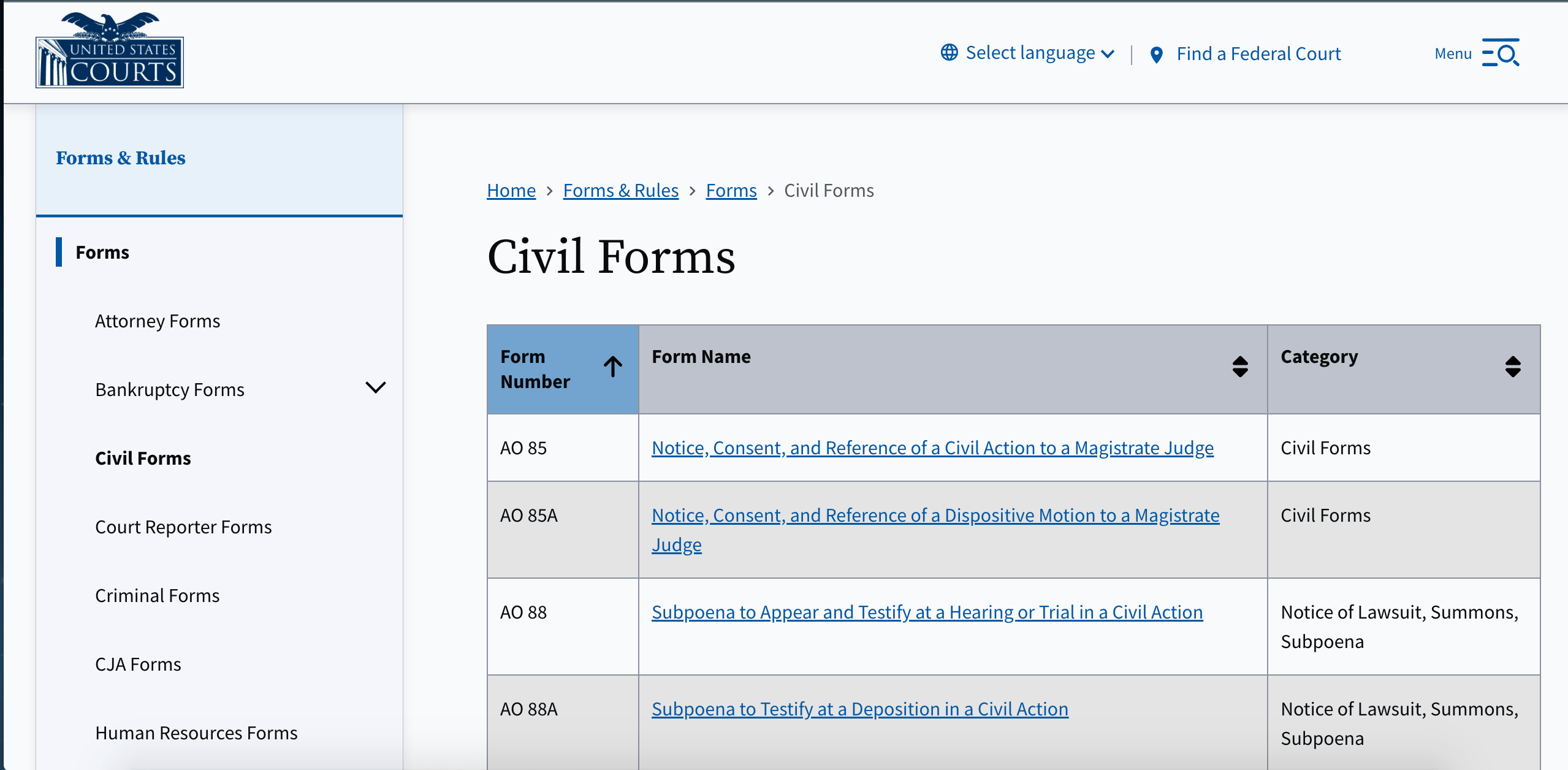If you’ve recently received a notification from HM Revenue and Customs (HMRC) notifying you that you’re included in Making Tax Digital (MTD) for Income Tax, you might have many questions.
To clear things up, we’ve structured this blog as a comprehensive question-and-answer guide specifically for people like you.
Note that we already have a general FAQ about MTD for Income Tax that answers many questions.
Here’s what we cover:
If HMRC has recently written to you about Making Tax Digital (MTD), it’s very likely that two things are true:
- You run one or more sole trader businesses, or are a landlord, or both.
- You’re registered for Self Assessment, and your 2023/24 Self Assessment tax return reported gross income above £50,000.
If your 2024/25 Selt Assessment tax return also shows gross income above £50,000 then, from 6 April 2026, you’ll no longer be able to meet your income tax obligations through the traditional Self Assessment process.
Instead, you’ll be legally required to use the Making Tax Digital for Income Tax to tell HMRC about your income tax.
Under MTD for Income Tax, you’ll need to do the following via MTD-compatible software:
- Keep digital records of your business/property income and expenses.
- Submit quarterly updates to HMRC of the income and expenditure.
- Submit a tax return to confirm your income each year
HMRC’s letter is essentially a heads-up to help you understand your new responsibilities. The aim is to ensure you have plenty of time to prepare, so you’re not caught off guard when the deadline arrives.
You’re not alone in receiving the letter. There are estimated to be just under 800,000 taxpayers required to switch to MTD as of April 2026, with hundreds of thousands more switching in the following years as the qualifying gross income threshold is lowered.
2. What exactly is MTD for Income Tax and why does it affect me?
MTD is part of HMRC’s broader initiative to modernise and digitalise the tax system, making it more efficient, accurate, and easier to manage.
Initially rolled out for VAT-registered businesses back in 2019, the MTD system and its requirements is now expanding to income tax for sole traders and landlords with turnovers above £50,000 as of April 2026. As of April 2027, those with turnovers above £30,000 will be included and, as of April 2028, those with turnovers above £20,000 will be included, too.
It’s important to note that MTD for Income Tax is separate from MTD for VAT. So, even if you’re already using MTD for VAT – or aren’t VAT registered at all – this change may still affect you.
3. What do I have to do for MTD for Income Tax?
In summary, the legal requirements are as follows:
Digital records
You will need to keep income and expenditure records digitally. For most people, this means using MTD-compatible accounting software.
Good practice is to digitise records immediately e.g. issuing invoices through accounting software like Sage Accounting, or scanning receipts when you receive them using a data entry automation tool like AutoEntry.
However, you could create the required digital records at any point ahead of creating the quarterly update for that period (see below) and still be within the rules.
You also need to keep the tax records and your tax return digitally for the mandatory five-year period after 31 January following the end of the tax year.
Quarterly updates
In addition to a single yearly digital tax return (see below), you or your accountant/bookkeeper are now required to digitally submit updates about income and expenditure to HMRC every three months/90 days. In other words, you’ll need to do this four times each tax year.
Quarterly updates must be submitted via MTD-compatible software, like Sage Accounting.
The goal is to provide better insights into your tax affairs and liability.
If you have more than one sole trader business, then you’ll need to provide individual quarterly updates for each of them.
All rental income is also a separate update, but can be included in the same individual quarterly update if you have more than one property (note that foreign property rental income requires its own individual quarterly update).
Digital tax return
On 31 January, you’ll be required to digitally sign and submit a tax return for the tax year that ended the previous April. This is also known as a digital tax return and covers all your income from any of your sole trader or landlord income for the year. It’s very similar to the existing Self Assessment tax return and again must be submitted via MTD-compatible software.
The tax return can detail not just your income and expenditure but other income sources and tax reliefs, or allowances and charges that formerly you may have submitted on Self Assessment supplementary forms. Some will be drawn from HMRC’s systems, if it’s available.
MTD-compatible software
Because of the above requirements to submit information digitally to HMRC, you (or your accountant or bookkeeper) will need to use software approved by HMRC as being MTD-ready.
Furthermore, once your income and expenditure data are in the accounting ledger, you must ensure any other software you use – to calculate adjustments, as an example – is digitally linked to the ledger software.
Signing up
You will need to sign up for MTD for Income Tax ahead of April 2026. Enrolment isn’t automatic, and failure to sign up in time runs the risk of attracting penalties from HMRC. As April 2026 approaches, signing up can be done by following HMRC’s instructions.
You will need to configure your accounting software, too, so it knows you’re using MTD for Income Tax. Consult your vendor for support if you’re unsure how to do this.
Your Guide to MTD for Income Tax
Our free e-book is written by experts and is all you need as a sole trader or landlord to understand what MTD means for your business – and how to ensure you’re ready in time.

4. The letter from HMRC talked about signing up early. What does this mean?
As of April 2025, HMRC began a large-scale public beta test of the MTD for Income Tax system for the 2025/2026 tax year. You can sign-up here and thereby start following MTD for Income Tax’s requirements before it becomes a legal requirement.
Joining the public beta is optional but encouraged. Doing so is a good idea because you can test drive MTD for Income Tax and adapt your processes ahead of time. You’re at less risk of making a mistake when MTD for Income Tax begins and attracting a penalty.
It’ll be easier to access support from HMRC and your software vendor ahead of the rush in April 2026, too.
You’ll need software that’s compatible with MTD for Income Tax, such as Sage Accounting. See Sage’s Income Tax for Public Beta page for more details.
Note that, despite signing up to MTD for Income Tax, you will still need to submit a Self Assessment tax return for the 2024/2025 tax year on or before 31 January 2026.
5. Despite what HMRC says in the letter, my income for the current year will probably be below £50,000. Do I still need to follow MTD for Income Tax?
Yes, if HMRC has identified you as meeting the income threshold for MTD for Income Tax based on your Self Assessment tax return, you will be required to join MTD from April 2026, even if your income drops below £50,000 in the following year.
However, if your qualifying gross income remains below £50,000 for three consecutive years then you can contact HMRC to ask to go back to the Self Assessment tax return system.
Bear in mind that the MTD for Income Tax qualifying gross income threshold falls to £30,000 as of April 2027, and then £20,000 as of April 2028. So, unless your income drops below these levels, it’s likely you’ll still be required to follow the MTD for Income Tax rules despite earning below £50,000.
Because 2023/24 was a transition year for basis period reform, in which the tax year might’ve been extended for your sole trader business, you might find that your income was unusually high and not representative of your normal yearly income. You might feel MTD for Income Tax therefore shouldn’t apply to you. You should contact HMRC to discuss this.
6. Isn’t MTD for Income Tax going to make my accounting more complicated?
Not at all. In fact, using MTD compatible software may help streamline your accounting and reduce the time spent on manual admin – especially once you’re familiar with the new processes.
For example, you should find that each quarterly update is populated automatically based on the income and expenditure data already within the ledger. All you need to do is check and click to submit. Software like Sage Accounting will remind you when this required.
Similarly, submitting the digital tax return on 31 January should be easy because everything will again be automatically completed. You simply need to review, make manual adjustments/input missing details if they’re required, and click to submit.
The software you use will need to be recognised by HMRC as MTD-ready. Existing software from many major providers, such as the various Sage Accounting plans, is already compatible with MTD for Income Tax. So, all you will need to do moving forward is register for MTD for Income Tax ahead of April 2026, and activate MTD for Income Tax within the software.
8. Can I opt out of MTD for Income Tax?
MTD for Income Tax is a legal requirement for those who fall within scope and you can’t choose to opt out, or delay signing-up.
However, there are personal circumstances that mean people can request exemption, as follows:
- Your disability or age means it’s not practical for you keep or submit digital records.
- Your beliefs as part of a practicing religious society or order are incompatible with keeping or submitting digital records, or using electronic communications.
You will need to apply to HMRC for exemption and explain why.
If you’ve already been granted exemption from MTD for VAT then this will be automatically carried across. There will be no need to apply afresh for MTD for Income Tax.
If any of the following apply to you then you are automatically exempt from MTD for Income Tax. You will continue using the Self Assessment system and do not need to apply for exemption:
- You’re a foster carer or shared lives carer, and the only income you receive is qualifying care income.
- You don’t have a UK National Insurance (NI) number as of 31 January before the first tax year for MTD for Income Tax (e.g. 31 January 2026 for April 2026’s launch of MTD for Income Tax).
- You’re a trustee, including charitable trustees and those for non-registered pension schemes.
- You’re a personal representative of somebody who has died.
- You are a Lloyd’s underwriter, but only in relation to your underwriting business.
- Yours is a non-resident company.
9. My accountant or bookkeeper handles my tax. Will MTD for Income Tax affect that?
Your accountant or bookkeeper can continue handling your tax affairs under MTD for Income Tax, including undertaking the quarterly updating on your behalf, and creating the digital tax return. However, you remain legally responsible for reviewing and approving the digital tax return before it’s submitted.
Contact them as soon as possible to discuss the changes, and any new requirements they may need. For example, you will probably need to work with them to create a process to pass them details of your income and expenditure every three months ahead of the quarterly reporting deadline (see “What are the initial MTD for Income Tax dates I need to know about?”, below), or start using data entry automation software to automatically send them details from paperwork and PDFs you receive.
10. Does MTD affect how much I pay in income tax?
No – MTD does not change how much Income Tax you pay. It is simply a new way of keeping records and reporting income and expenses to HMRC if you’re a sole trader or landlord with a qualifying gross income that brings you within scope. Everything else about the income tax system remains the same, such as income tax personal allowances, what you can claim as expenses, and so forth.
You will continue to pay any outstanding tax liability on 31 January, and will continue to pay twice yearly on account based on your estimated earnings if HMRC has requested you do so.
11. Is MTD for Income Tax a new tax system?
No. MTD for Income Tax is just a new way of reporting income tax for sole traders and landlords. It replaces the Self Assessment tax return for those affected.
12. My accounting is simple, and I just don’t need to make quarterly updates. Am I still included in MTD for Income Tax?
There are several kinds of individuals whose income might, at first glance, not seem relevant for quarterly reporting.
Examples include seasonal businesses or workers, such as farmers or holiday lets, where the bulk (or all) of the income arrives in a short period within the tax year. This means some quarterly updates for these people may have to list near-zero income, for example.
Landlords with regular and static monthly incomes and limited expenses might also wonder if quarterly reporting makes sense given their income is predictable.
However, in all cases, you must still follow the MTD for Income Tax rules – and this includes making quarterly updates to HMRC using MTD-approved software.
It’s worth remembering that quarterly updates require only basic details of income and expenditure. They don’t require details of adjustments or charges etc., as with the digital tax return. Furthermore, quarterly updates are cumulative. In other words, you can correct any misstated or lower incomes from an earlier period in the following quarterly report.
13. Can I use spreadsheets for MTD for Income Tax?
Yes, spreadsheets can be used for MTD for Income Tax provided you also use MTD-compatible bridging software to allow communication with HMRC in order to submit the quarterly updates and digital tax return.
You can also use spreadsheets for non-ledger activities such as adjustment calculations once the data is in the ledger – although you should ensure there’s a legally-compliant digital link. In other words, you cannot cut/copy and paste data between the accounting software and the spreadsheet, or hand type it.
However, using spreadsheets for your accounting is not a good idea. It’s very easy to accidentally overwrite cells in a spreadsheet, for example, and spreadsheets easily become corrupted. If that happened then not only would you lose data but you’d fall short of the legal requirements of MTD for Income Tax, and could attract penalties from HMRC.
Furthermore, you will be legally required to securely keep the digital records contained within the spreadsheets for five years following 31 January after the end of the tax year. Keeping any file for that long can be a challenge. Using dedicated accounting software takes care of this for you, and is simply easier and much less prone to errors.
14. I run a business with employees. Does MTD for Income Tax apply to me?
Regardless of its complexity, if yours is a self-employed sole trader business (i.e. you’re registered for Self Assessment) and you have income above £50,000 then you’re legally required to follow MTD for Income Tax will apply for you as of April 2026.
Having employees does not exempt you from MTD. What matters is your business structure (i.e. being a sole trader) and your qualifying income level, not how many people you employ or how complex your operations are.
15. I’m employed full-time but run a side hustle business. Does MTD for Income Tax apply to me?
If you’ve been contacted by HMRC about MTD for Income Tax then you will be registered for Self Assessment and the income from your side hustle will have been above £50,000 on your recent tax return. Therefore, you’re considered be running a sole trader business, and MTD for Income Tax applies.
The same is true if you’re a landlord who’s employed full time. If rental income you receive is above £50,000 and you’re registered for Self Assessment, then you need to follow the MTD for Income Tax rules.
Being employed full-time does not exempt you from MTD if your self-employment or rental income is above the qualifying income threshold.
One of the benefits of MTD for Income Tax is that the tax data from your P60 employment tax statement should automatically flow into your digital tax return in the MTD-compatible software.
16. Can I switch my business or landlord properties to a limited company to avoid MTD for Income Tax?
Incorporated businesses like limited companies are not affected by MTD for Income Tax, so, incorporating your business or transferring property to a limited company could mean MTD for Income Tax no longer applies to you for that income. However, whether it’s right and beneficial for you will depend on your personal circumstances and you should seek professional advice from an accountant or similar.
17. What are the initial MTD for Income Tax dates I need to know about?
Generally speaking, and assuming your tax year begins on 6 April, these are the dates you need to know for the 2026/2027 tax year, which is the first year under the MTD for Income Tax rules:
- Quarterly update #1: 7 August 2026
- Quarterly update #2: 7 November 2026
- Quarterly update #3: 7 February 2027
- Quarterly update #4: 7 May 2027
- Tax return: 31 January 2028
Remember that good accounting software will remind you of these dates in advance, and prepare the updates/tax return for you.
18. I already use MTD for VAT. Do I need to do anything for MTD for Income Tax?
MTD for VAT and MTD for Income Tax are entirely separate systems. If you fall within scope of MTD for Income Tax, you will need to sign-up for it separately, and understand its unique requirement (unless you’re excluded – see above).
Notably, the penalty points systems applied to MTD for VAT and MTD for Income Tax are also separate. In other words, if you have penalty points applied for a matter relating to VAT, they won’t affect any separate points tally for MTD for Income Tax (and vice versa).
19. I used a three-line account on my Self Assessment tax return. Can I continue doing this with MTD for Income Tax?
With MTD for Income Tax, if you are eligible to use a three-line account (because your income is below the VAT threshold), you can continue to report just your total income, total expenses, and profit in your quarterly updates and your tax return. MTD-compatible software will help you submit these summaries each quarter and will use this information to help you complete your tax return at the end of the tax year.
Final thoughts
Learning about MTD for Income Tax might have come as a shock, especially if you’ve been using Self Assessment tax returns for some time.
But there’s a lot to be said for remaining in a positive frame of mind. HMRC is introducing MTD for Income Tax for the benefit of all, and following its rules provide the opportunity to take control of your accounting and gain the insights you need to grow your business.
Join the HMRC MTD for Income Tax Public Beta with Sage
Get a head start with Making Tax Digital (MTD) for Income Tax. Master the new digital tax system with early access, expert support, and exclusive insights from Sage.
Get started now

#HMRC #written #Making #Tax #Digital #Income #Tax










